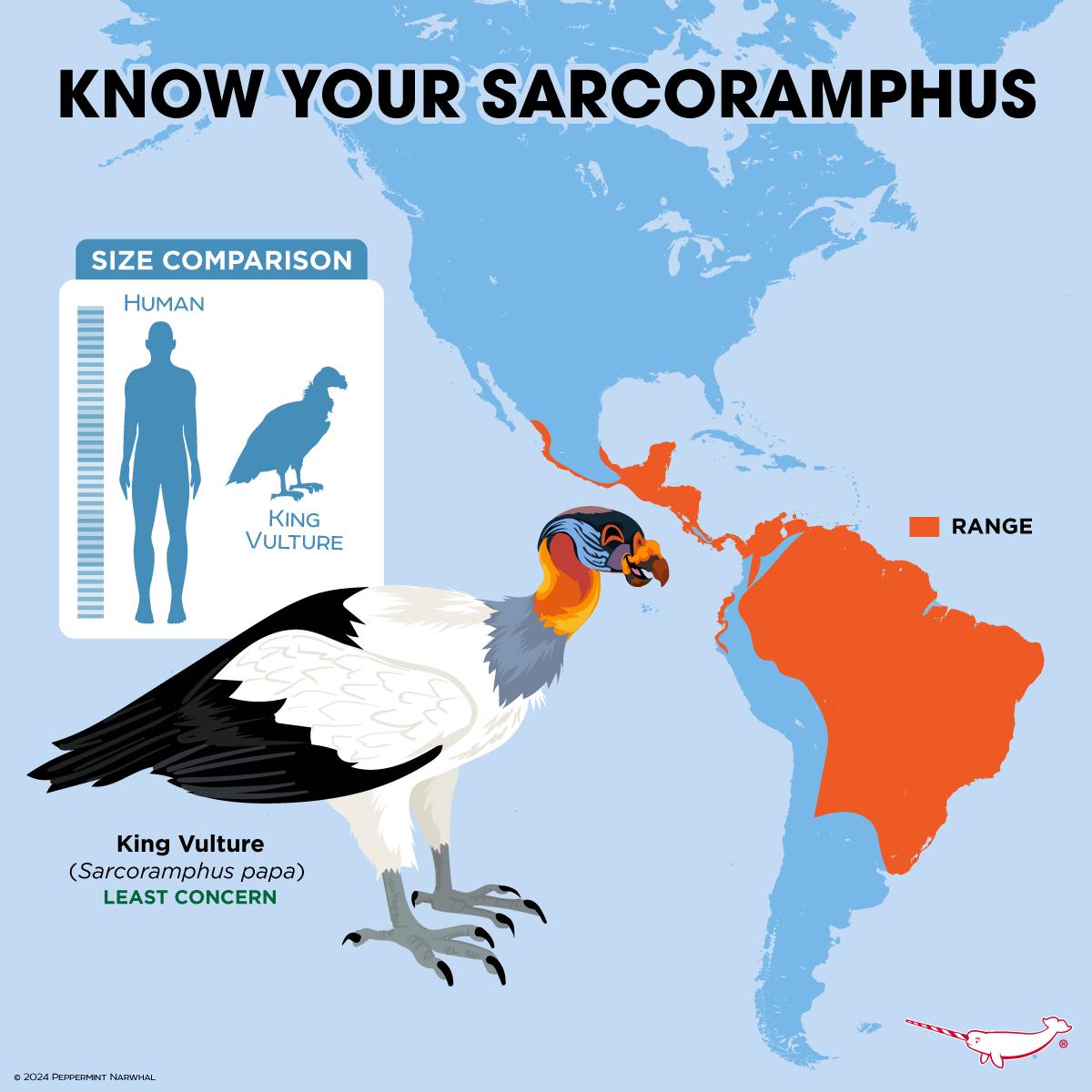Understanding the King Vulture: Sarcoramphus Papa
The genus Sarcoramphus, with its sole representative, the King Vulture (Sarcoramphus papa), offers a fascinating glimpse into the avian biodiversity of the New World. These birds play a pivotal role in their ecosystems as critically important scavengers. This article aims to provide an in-depth look at these majestic birds, focusing on their biology, ecology, conservation status, and their vital role in maintaining healthy ecosystems. The following key points will guide our exploration:
1. **Biology and Behavior of Sarcoramphus papa**: An overview of the King Vulture’s distinctive physical and behavioral traits.
2. **Ecological Role and Feeding Habits**: Understanding the importance of King Vultures in their ecosystems and unique dietary strategies.
3. **Habitat Preferences and Distribution**: A look at the habitat requirements and geographical distribution of King Vultures.
4. **Conservation Status and Threats**: Discuss the current conservation status of King Vultures and their challenges.
5. **Human and King Vulture Interactions**: Exploring the relationship between humans and King Vultures, including cultural significance and conservation efforts.
**Biology and Behavior of Sarcoramphus Papa**
The King Vulture stands out in the avian world due to its vibrant coloration and distinctive physical features. Adults boast a striking combination of white, black, and grey plumage, with a vividly colored head that sports a mosaic of red, orange, and blue hues. The fleshy caruncle atop their beaks serves as an ornamental feature and plays a role in thermoregulation. Equipped with a powerful beak, the King Vulture is uniquely adept at opening tough carcasses, allowing them and other scavengers to access the nutritious inner contents.
Behaviorally, these birds are known for their soaring flight, utilizing thermals to travel vast distances with minimal effort. They primarily locate their food visually, contrasting with the olfactory methods used by some other scavenger species. Though solitary or found in pairs during the breeding season, King Vultures often gather in large groups at feeding sites.
**Ecological Role and Feeding Habits**
As apex scavengers, King Vultures play an indispensable role in their ecosystems by consuming dead animals. This not only aids in nutrient cycling but also helps prevent the spread of diseases associated with decaying carcasses. Unlike other scavengers that may struggle with thick hides, the King Vulture’s strong beak allows it to access parts of the carcass that would otherwise remain unavailable.
**Habitat Preferences and Distribution**
The King Vulture inhabits various environments from southern Mexico through Central America and into South America as far as northern Argentina. They prefer tropical lowland forests, including undisturbed and partially cleared areas, where large trees are available for nesting.
**Conservation Status and Threats**
Currently, the King Vulture is not considered endangered, but its populations face pressures from habitat destruction, poisoning (from carcasses treated with pesticides), and potential food scarcity. Their dependence on large expanses of forest makes them particularly vulnerable to deforestation and habitat fragmentation.
**Human and King Vulture Interactions**
Historically, kings’ vultures hold a place of reverence in many indigenous cultures, often associated with death but also seen as cleansers and a vital link in the cycle of life. In modern times, their imposing appearance and ecological role have made them a flagship species for conservation efforts in their range. Education and eco-tourism have become important tools in fostering coexistence between humans and king vultures, highlighting the birds’ ecological importance and the need for continued conservation efforts.
The intricate balance of nature’s ecosystems is vividly represented in the life and role of the King Vulture. As we delve deeper into understanding these magnificent birds, it becomes clear that their conservation is about preserving a singular species and maintaining the health and integrity of an entire ecosystem. Efforts to protect the King Vulture and its habitat are essential steps toward a more sustainable coexistence with the natural world, emphasizing the interconnectedness of all life forms.
*****
Source Description
Know Your Sarcoramphus
The genus Sarcoramphus contains just one New World Vulture species, the colorfully distinctive King Vulture (Sarcoramphus papa.) These important scavenger birds are found from southern Mexico to southern Argentina. Their strong beaks allow them to tear open parts of carcasses that other scavengers would not be able to manage, so they become an important keystone species in removing decaying material that could otherwise spread disease if it was not removed naturally. King Vultures prefer dense tropical forests at low altitudes. The fleshy wattle surrounding the beak is called a ‘”caruncle” and is found in both males and females. Now You Know Your Sarcoramphus!
Shop www.peppermintnarwhal.com


